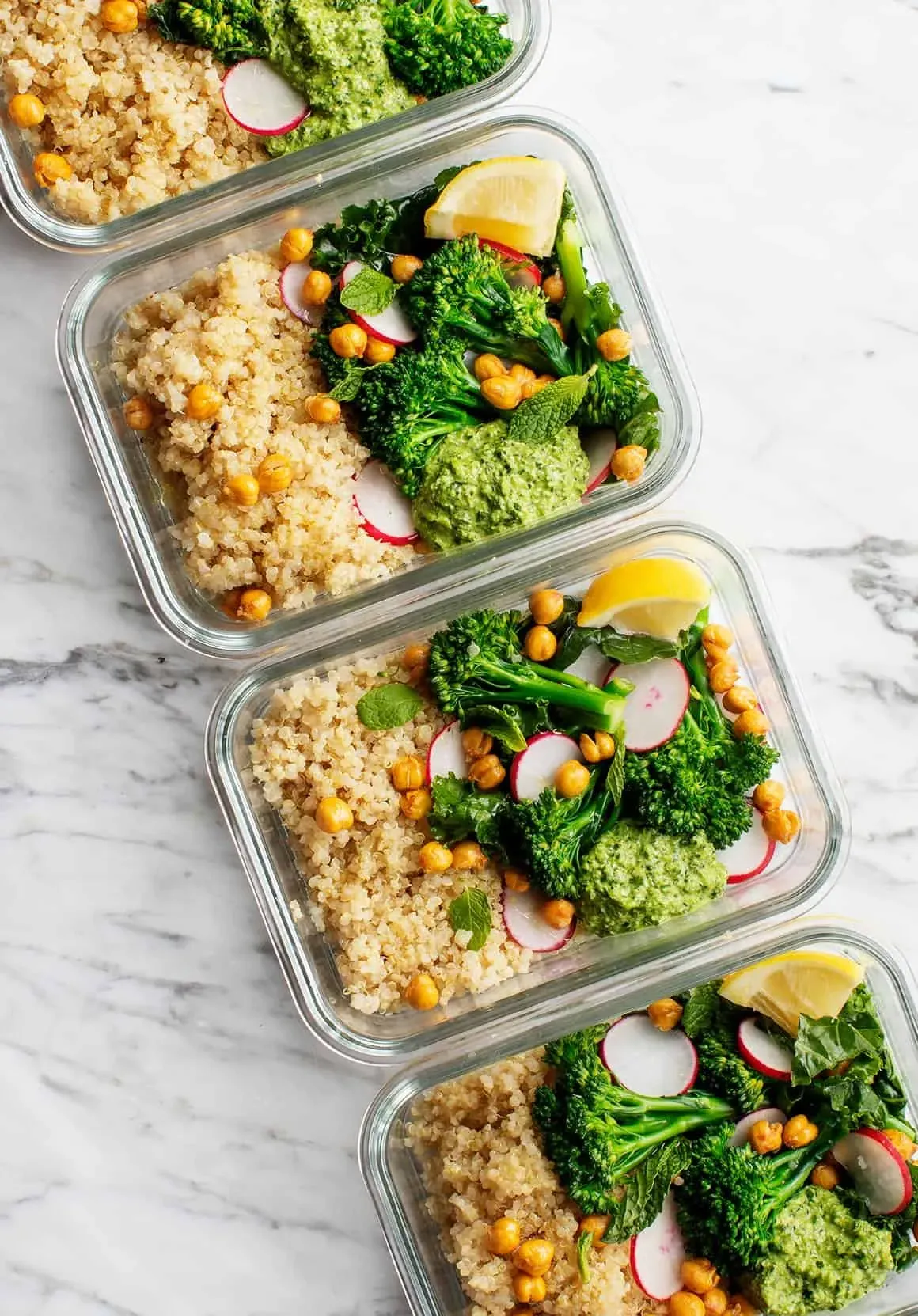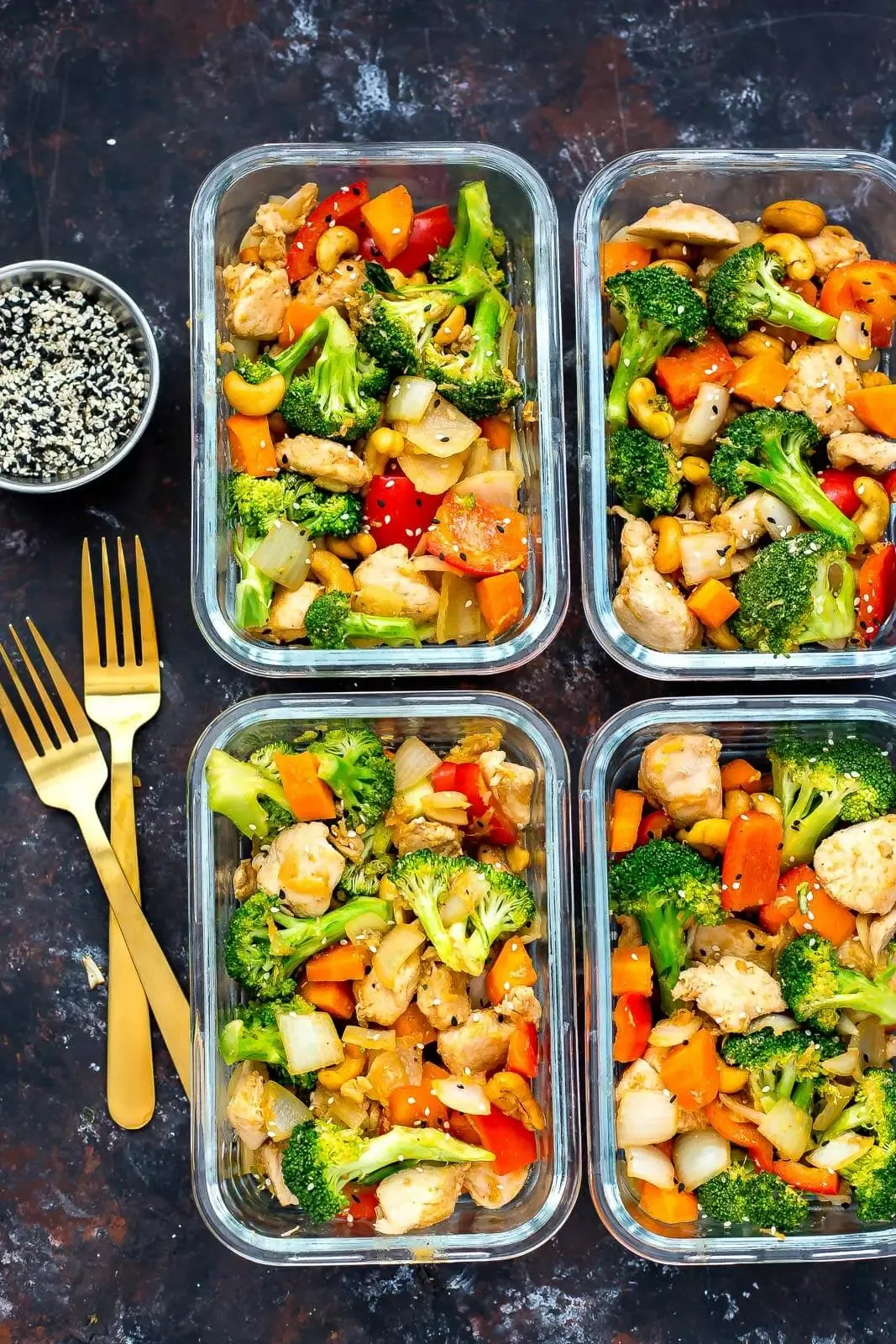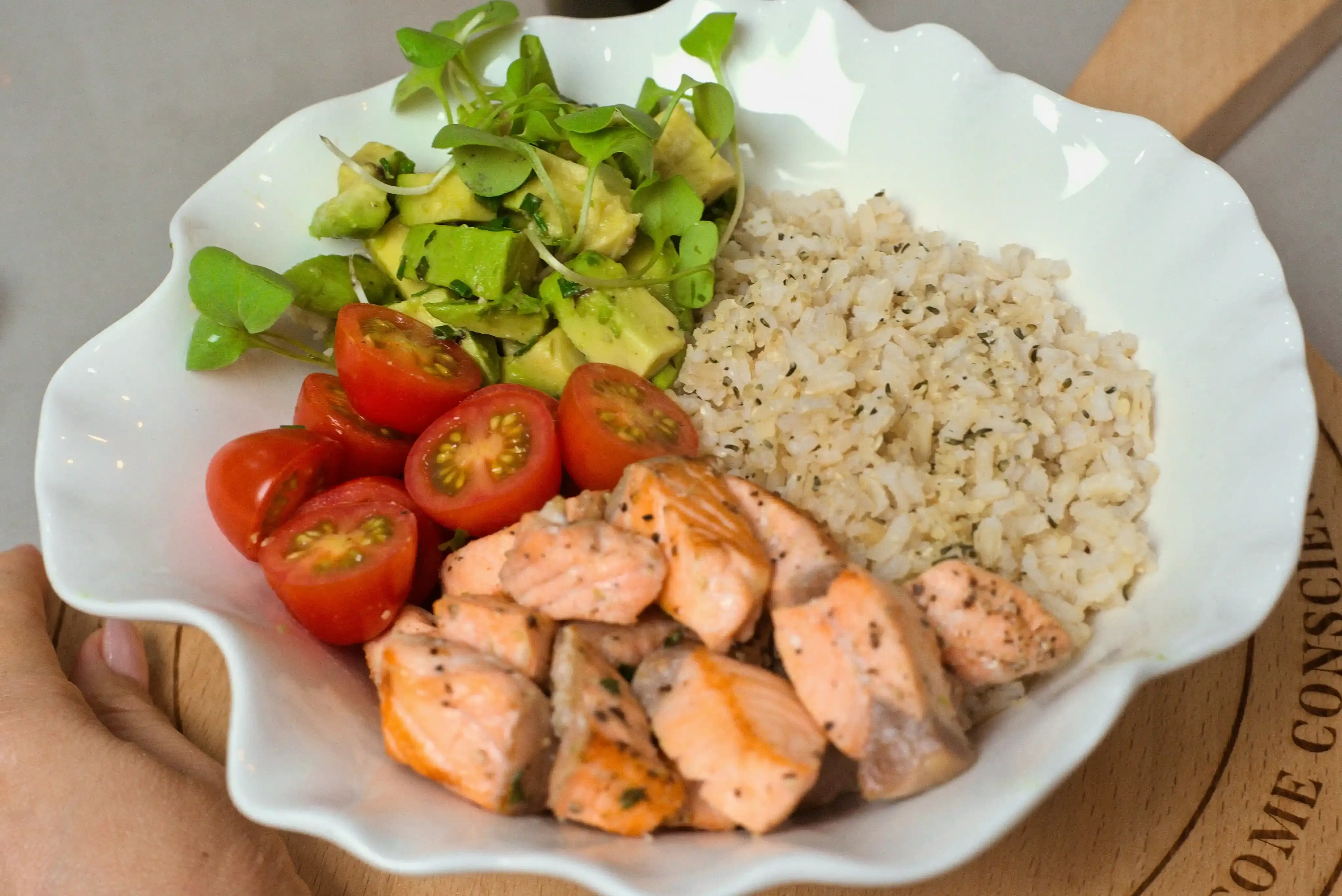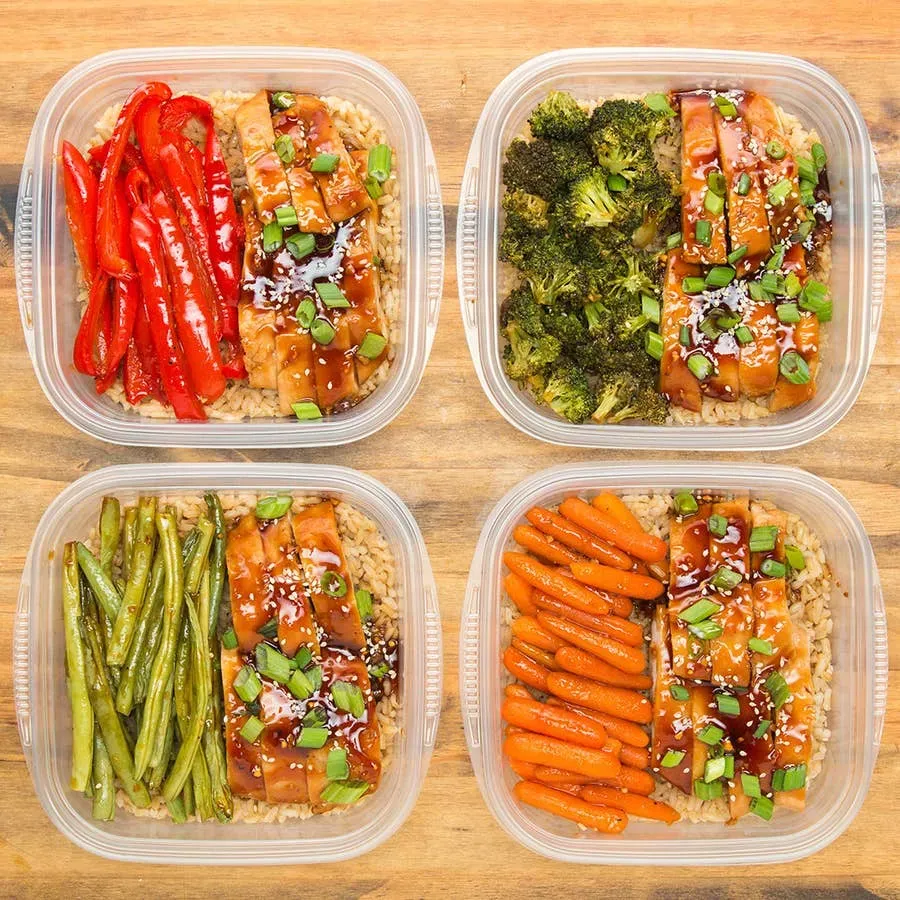Table of Contents
Ever feel like your week is a whirlwind, and the last thing you have time for is making a decent meal? You're not alone. Juggling work, life, and everything in between often leaves us staring into the fridge at 7 PM, wondering what sad, last-resort dinner we can cobble together. Maybe you end up ordering takeout again, blowing your budget and feeling less than great afterward.
Why Bother with Healthy Fast Meal Prep?

Why Bother with Healthy Fast Meal Prep?
Reclaim Your Time (and Sanity)
Let's be real. Most weeknights feel like a race against the clock. You get home, you're tired, and the thought of chopping vegetables or figuring out what to cook feels like scaling Everest. This is preciselywhy bother with healthy fast meal prep? Because it snatches back those precious minutes. Instead of spending 30-60 minutes every single night cooking from scratch, you invest a couple of hours on a less busy day, and boom – meals are ready. Think about what you could do with that extra time. Read a book? Hit the gym? Stare blankly at a wall? The possibilities are endless, and frankly, more appealing than emergency pasta.
Keep Cash in Your Wallet (and Junk Food Out)
Eating out adds up faster than you think. That "quick" $15 lunch every day? That's $75 a week, minimum. Suddenly, your grocery budget looks like pocket change compared to your takeout tab. Meal prepping forces you to be more intentional about your food spending. You buy ingredients with a plan, which means less impulse buying and less food waste rotting in the back of your fridge. Plus, when you have a ready-made healthy meal waiting, you're way less likely to cave and order that greasy pizza just because you're starving and unprepared. It's a simple equation: prep equals savings, savings equals happy bank account.
Here's a quick look at potential savings:
Take Control of What You Eat
When you're scrambling for food, you often grab whatever's easiest, which isn't always what's best for you. Processed snacks, sugary drinks, meals packed with questionable ingredients – they sneak in when you're unprepared. Meal prepping puts you in the driver's seat. You choose the ingredients, you control the portion sizes, and you know exactly what's going into your body. If you're trying to eat more vegetables, cut down on sugar, or hit specific protein goals, prepping makes it achievable. It removes the daily "what should I eat?" decision fatigue and replaces it with a simple, healthy answer already in your fridge.
Getting Started: Your Healthy Fast Meal Prep Strategy

Getting Started: Your Healthy Fast Meal Prep Strategy
Start Small, Don't Go Crazy
diving headfirst into meal prepping for an entire week of breakfasts, lunches, dinners, and snacks can feel like trying to build a rocket ship in your kitchen. Don't do that. You'll burn out faster than a cheap candle. The real trick togetting started with healthy fast meal prepis to pick just one or two meals to tackle first. Maybe it's making a big batch of overnight oats for breakfast or prepping a few salads for lunch. Get a feel for the process, see what works in your kitchen setup, and figure out how much time it *actually* takes you. You can always add more meals as you get comfortable. Think of it as dipping your toe in the water, not jumping off the high dive.
Plan Your Attack (and Your Grocery List)
Wing it, and you'll end up stressed, with random ingredients you don't know what to do with, and probably resorting to takeout anyway. A solid plan is non-negotiable. First, look at your week. What days are busiest? When will you actually *need* a prepped meal? Then, pick your recipes based on that and what ingredients you already have. Keep it simple at first – recipes with minimal ingredients and straightforward steps are your friend. Once you have your recipes, make a detailed grocery list. Seriously, check your pantry and fridge first so you don't buy duplicates of that obscure spice you used once in 2019. A little planning upfront saves you multiple trips to the store and prevents food waste.
Here's a simple checklist for your first prep session:
- Choose 1-2 meals to prep (e.g., breakfast and lunch).
- Pick simple recipes with minimal steps.
- Check your pantry and fridge inventory.
- Write a specific grocery list based on your recipes.
- Set aside a specific time slot for prepping.
- Gather your containers before you start cooking.
Breakfast & Lunch: Quick Healthy Fast Meal Prep Ideas

Breakfast & Lunch: Quick Healthy Fast Meal Prep Ideas
Morning Wins: Grab-and-Go Breakfasts
Mornings are chaotic enough without trying to whip up a nutritious meal while simultaneously finding your keys and avoiding stepping on a rogue Lego. This is wherehealthy fast meal prep ideasfor breakfast really shine. We're talking about things you can literally grab from the fridge or freezer and eat on your commute or at your desk. Think overnight oats layered with fruit and nuts in jars, ready-made smoothie packs you just dump into a blender with liquid, or egg muffins baked in a batch that you can reheat in seconds. These aren't gourmet meals; they're strategic fuel. They prevent you from hitting the drive-thru for a sugar bomb or skipping breakfast entirely, which just sets you up for a mid-morning crash and questionable snack choices.
Lunchtime Lifesavers: Noontime Prep Power
Lunch can be the biggest culprit for wasted money and unhealthy choices. The office vending machine calls, the nearby deli beckons, and suddenly you're eating something you didn't really want, feeling sluggish afterward. Prepping your lunches cuts through this decision fatigue. Simple salads with pre-cooked protein (like chicken or lentils), grain bowls assembled with roasted vegetables and a simple dressing, or last night's leftovers portioned into containers are all solidhealthy fast meal prep ideasfor lunch. The key is making them appealing and easy to transport. Separate dressings or sauces until you're ready to eat to avoid soggy salads. Pack ingredients that hold up well in the fridge for a few days. A little effort here saves you from the sad desk lunch or the expensive takeout trap.
Some easy-to-prep lunch components:
- Roasted chicken breast or chickpeas
- Hard-boiled eggs
- Quinoa or brown rice
- Chopped raw vegetables (carrots, bell peppers, cucumbers)
- Leafy greens (pack separately or use sturdy types like kale)
- Homemade vinaigrette or simple tahini dressing
Dinner & Snacks: More Healthy Fast Meal Prep Ideas

Dinner & Snacks: More Healthy Fast Meal Prep Ideas
Sheet Pan Dinners & Casseroles: Your Weeknight Heroes
Alright, let's talk dinner. This is often where the wheels fall off the healthy eating wagon. You're tired, hungry, and the sofa is calling your name, not the kitchen. This is precisely why focusing onDinner & Snacks: More Healthy Fast Meal Prep Ideasis crucial. For dinner, think about meals that are easy to make in larger batches and reheat well. Sheet pan dinners are fantastic for this. Toss chopped vegetables and a protein (chicken sausage, tofu, salmon) with some oil and seasoning, roast it all on one pan, and you've got multiple servings ready to go. Casseroles, stews, and chilis are also meal prep champions. They often taste even better after a day or two when the flavors meld, and you can portion them out into individual containers for zero-effort weeknight meals.
Batch Cook Staples for Flexible Meals
Meal prepping dinner doesn't always mean making five identical meals. Sometimes, the smartest approach is to batch cook components that you can mix and match throughout the week. Cook a large batch of quinoa or brown rice. Roast a tray of sweet potatoes or broccoli. Grill or bake a few chicken breasts or cook a big pot of lentils or black beans. With these building blocks ready, you can assemble different meals in minutes. Combine rice, beans, and salsa for a quick burrito bowl. Add chicken and roasted vegetables to greens for a hearty salad. This offers variety so you don't get bored, while still providing the core benefit of having healthy ingredients prepped and waiting. It's like having your own personal, healthy fast-food assembly line in your fridge.
Think about prepping these dinner components:
- Cooked grains (quinoa, rice, farro)
- Roasted vegetables (broccoli, sweet potatoes, bell peppers, Brussels sprouts)
- Cooked protein (chicken, ground turkey, lentils, chickpeas, hard-boiled eggs)
- Simple sauces or dressings (vinaigrette, peanut sauce)
- Washed and chopped salad greens or hearty greens like kale
Snack Attack: Don't Let Hunger Derail You
Snacks are the silent killers of many healthy eating plans. You're a little peckish between meals, nothing healthy is readily available, and suddenly you've inhaled a bag of chips or half a package of cookies. Prepping healthy snacks is just as important as prepping meals for keeping you on track. Portion out nuts and seeds, wash and chop fruit and vegetables (carrots, celery, apple slices) to pair with hummus or nut butter, make a batch of energy balls, or hard-boil a dozen eggs. Having these healthy options already portioned and easy to grab prevents those impulsive, less-than-ideal snack choices. It’s a small step, but it makes a big difference in keeping your energy stable and your goals in sight. That's the power of incorporating smartDinner & Snacks: More Healthy Fast Meal Prep Ideasinto your routine.
Making It Stick: Tips for LongTerm Meal Prep Success

Making It Stick: Tips for LongTerm Meal Prep Success
Don't Aim for Instagram Perfection (Seriously)
Look, the internet is full of perfectly portioned, identical containers lined up like little soldiers, each one a masterpiece of culinary organization. That's great for photos, but it's not the reality for most people trying to makeMaking It Stick: Tips for LongTerm Meal Prep Successa habit. Your first few attempts might be a little messy. You might run out of containers, or realize reheating that particular dish makes your kitchen smell like despair. That's okay. The goal isn't a magazine cover; it's having food ready so you don't end up eating cereal for dinner again. Focus on progress, not perfection. Find recipes you actually like eating for several days. Figure out which containers work best for *your* life and *your* fridge space. It's about building a sustainable routine, not winning a meal prep beauty contest.
Common hurdles newbies trip over:
- Trying to prep every single meal for the week right away.
- Picking overly complicated recipes.
- Not having enough suitable containers.
- Getting bored with the same meal by Wednesday.
- Underestimating the time it actually takes.
Find Your Prep Groove and Mix It Up
Making meal prep a long-term habit means finding a rhythm that fits your schedule and keeping things interesting. Maybe Sunday afternoon is your jam, or maybe you prefer a shorter session on Wednesday evening to get through the back half of the week. Experiment and see what works. And please, for the love of your taste buds, don't eat the exact same thing for lunch five days in a row forever. Once you're comfortable with the basics, start rotating recipes. Try a new grain, a different protein, or a new way of seasoning your vegetables each week. Batch cook flexible components instead of full meals so you can assemble different combinations daily. This prevents meal prep burnout and keeps you looking forward to your prepped meals instead of dreading them. Consistency, plus a little variety, is the secret sauce toMaking It Stick: Tips for LongTerm Meal Prep Success.
Ready to Prep?
So there you have it. Dive into the world of healthy fast meal prep ideas and watch how much smoother your week becomes. No more standing in front of an empty pantry or shelling out for overpriced, last-minute meals. It takes a little planning, sure, but the payoff in saved time, saved money, and actually eating decent food is considerable. Pick a few ideas that sound good, block out an hour or two, and just start. Your future self, the one who isn't stressed about dinner at 6 PM, will send you a thank-you note.